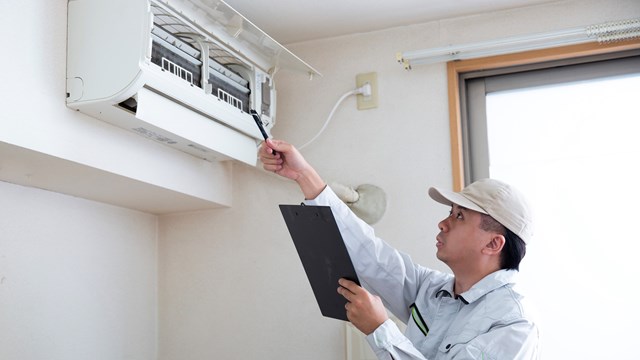
It’s never easy to get people to do what’s good for them. No one wants to exercise or take cough syrup or lay off the T-bone steaks, even if they know life will be better when they do. For years, it’s been the same way with energy conservation. These days, though, with oil and gas prices soaring and headlines filled with talk of global warming, it appears the time has come at last to embrace the grown-up thing and do what’s good for us.
Here’s a little secret though: it’s not that bad. In fact, in the case of co-ops and condos, it’s actually quite good, bringing significant savings to the budget and creating a better, more comfortable environment for residents. It’s the metaphorical equivalent of that cough medicine that tastes good. And thanks to new technologies, government subsidies and helpful experts, conserving energy has never been easier.
These days, the hardest part is convincing people to climb on the bandwagon. With enough education and a few revealing glimpses at a profitable bottom line, that problem should be short-lived and your building can make the jump to conserving energy and helping the environment with nary a ruffled feather in sight.
A Penny Saved…
Sometimes it pays to do the right thing—and energy conservation is one of those instances. The most important point to remember, according to Alexander Roberts, CEO of Roberts GEOSystems in Pleasantville, is that “energy efficiency is not an expense, it’s an investment.” He adds that it carries a rate of return ratio that is better than any stock on the market. And, those rates of return can vary anywhere from 15 percent to upwards of 50 percent, depending on the changes made.
When it comes to reducing energy usage, “there’s a real benefit,” says Timothy Carey, president and CEO of the New York Power Authority. New York Power just completely renovated its White Plains office space—a retrofit that cost $3.5 million but is yielding a 50 percent annual reduction in energy costs. As former CEO of the Battery Park City Project, Carey oversaw the creation of the Solaire, the first “green” residential building in New York City. He knows first-hand the potential of a truly eco-friendly structure.
Carey also led the retrofitting of a century-old building in Rochester, New York that ultimately yielded $20,000 per year in energy savings. “People have to remember that this is not just about new buildings,” he says. “It’s about retrofitting older buildings too. There’s a real benefit to utilizing these techniques.”
Convincing Everyone Else
As a board member or manager, you might know that energy conservation is a good thing, but you’re going to have to get the buy-in of all the other decision makers in your building before the real work can begin. The best way to convince anyone of anything, of course, is to show them the facts. Hiring an energy auditor will help document any problem areas in your building. The auditor, too, will be able to provide a comprehensive report that will show where the co-op or condo is losing money.
It also helps to do a simple analysis of fuel bills, says Warren Zaretsky, vice president of communications for U.S. Energy Controls in Flushing. He suggests collecting two years-worth of fuel bills and comparing them to find spikes in energy costs or usage. Companies like U.S. Energy can do those analyses through specialized software programs, providing month to month and year to year comparisons as well as the amounts of energy being used by square foot and also number of rooms and units.
“It’s a free service and it will tell people how they compare and how much energy they may be wasting,” Zaretsky says. “It’s a great way for them to get an accurate picture of how fuel-efficient their systems are.”
Roberts agrees that a skilled analysis can be the best selling point for an energy efficiency revamp. “Get a neutral document,” he says. “Show people that they’re not going to be negatively affected or have to sacrifice. Then show them the benefits.” The prospect of saving money usually can move even the staunchest opponents of conservation.
Taking the Plunge
There are several major avenues of opportunity when it comes to energy saving, including fuel and heating, water, lighting and appliances. And the best way to wrangle almost of all of those into submission is through an EMS—an energy management system.
“This is the single best investment any building can make in terms of reducing fuel use and reducing cost,” Zaretsky says. “It provides information and it can identify and isolate problem areas. If there are wide variations in temperatures in apartments, if there are problems with hot water levels or problems in the lines, it can help identify where those problems are.”
Being able to pinpoint trouble spots is imperative in ascertaining the true nature of a situation. Zaretsky cites an example: if someone in unit 4B is constantly complaining that they’re cold, the EMS will be able to determine whether or not all the other units on that line are okay. If they are, then repair crews will know the problem is in that one specific apartment.
How does this help save energy? Without the EMS, the superintendent might just solve the problem by turning up everyone’s heat—not a very cost-effective solution. The system also will track the efficiency of the boilers and furnaces, determining if repairs need to be made. An inefficient piece of machinery could cost thousands in excess heating costs.
Roberts adds that programmable thermostats and air conditioners with high efficiency ratings also can help with heating and cooling costs.
When it comes to rising costs, water has been making headlines recently, too.
“Water is a big expense these days,” says Alan Rothschild of Vantage Group in Monroe Township, New Jersey. “There was a 9.4 percent increase in July alone.” Cutting back on water consumption can make a big dent in a building’s energy bills. “There’s usually a big opportunity for cost reduction in water bills,” Rothschild says. “Using water is not a big expense—but wasting it is.”
To prevent that waste, Rothschild suggests a water efficiency analysis and regular meter monitoring to watch for significant increases which may signal leaks or other problems. For co-op and condo buildings that have commercial establishments on site, especially restaurants, he urges that those tenants be submetered, so that unit owners are not sharing the costs.
He also suggests a conservation tune-up for individual units and the building as a whole and adds that those tune-ups should be done by an experienced vendor, not a plumber. “Often, they don’t have the experience to maximize efficiency without causing problems.” For example, if the wrong fixture is added to create an efficient toilet, it could end up using more water than necessary because residents may have to flush more.
Roberts suggests, too, that residents use low-flow showerheads. “The energy used to heat water is usually about 40 to 50 percent of the overall cost,” he says.
Electricity and lighting are two other areas where significant headway can be made in terms of efficiency and cost. In recent years, lighting has evolved by leaps and bounds with manufacturers creating new bulbs that use less energy to produce more light. Roberts refers to energy-efficient lighting as “the low hanging fruit,” an analogy for the ease with which this change can be made. By swapping out standard incandescent lighting and replacing it with compact fluorescent options, buildings can save thousands of dollars. Not only do these bulbs and lamps use less energy, thereby saving on the electric bills, they also last longer, meaning the super isn’t going to be replacing bulbs every week.
Another major money saver involves energy-efficient appliances. The easiest way to find those is by looking for the Energy Star label, a sign that the machine meets the federal governments standards for conservation. For co-ops and condos, investing in energy-efficient washers can mean a huge savings. According to Roberts, “If they’re still using top-loading machines, they’re paying twice as much for hot water.”
Part of the Team
Even if the board does decide to do an energy audit or invest in an EMS or replace their lighting, their job still is not complete. To really maximize efficiency, individual unit owners must be brought on board with the plan. Education usually means action, and Zaretsky believes that perhaps creating a standing committee on the building’s board to monitor energy efficiency might be a good plan.
“People on boards change frequently,” he says. “Just like Congress, there should be a committee that remains focused on these issues, advises the rest of the board and helps find the best people to help deal with energy issues.”
The committee also could help bring residents into the fold, educating them on the benefits of changing their own lighting, or using efficient shower heads or turning down their thermostat.
“There are a number of good, logical energy-efficient behaviors that people can take if they want, but how do you get them to do it?” Zaretsky says. “They have to be conscious of energy costs, and the board has to continuously remind people of the importance of energy savings. It’s a national issue brought down to a building level.” He adds, laughing, “A good, healthy dose of guilt never hurt either. People can’t complain about maintenance fees going up if they don’t do something about it.”
With persistence, knowledge and the help of a few experts, co-op and condo boards have reason to be optimistic about energy efficiency. It’s a rarity when doing the right thing will bring economic benefits. It’s good for residents, it’s good for the bottom line and most important of all, it’s good for the planet.
Liz Lent is a freelance writer and a frequent contributor to The Cooperator.









Leave a Comment